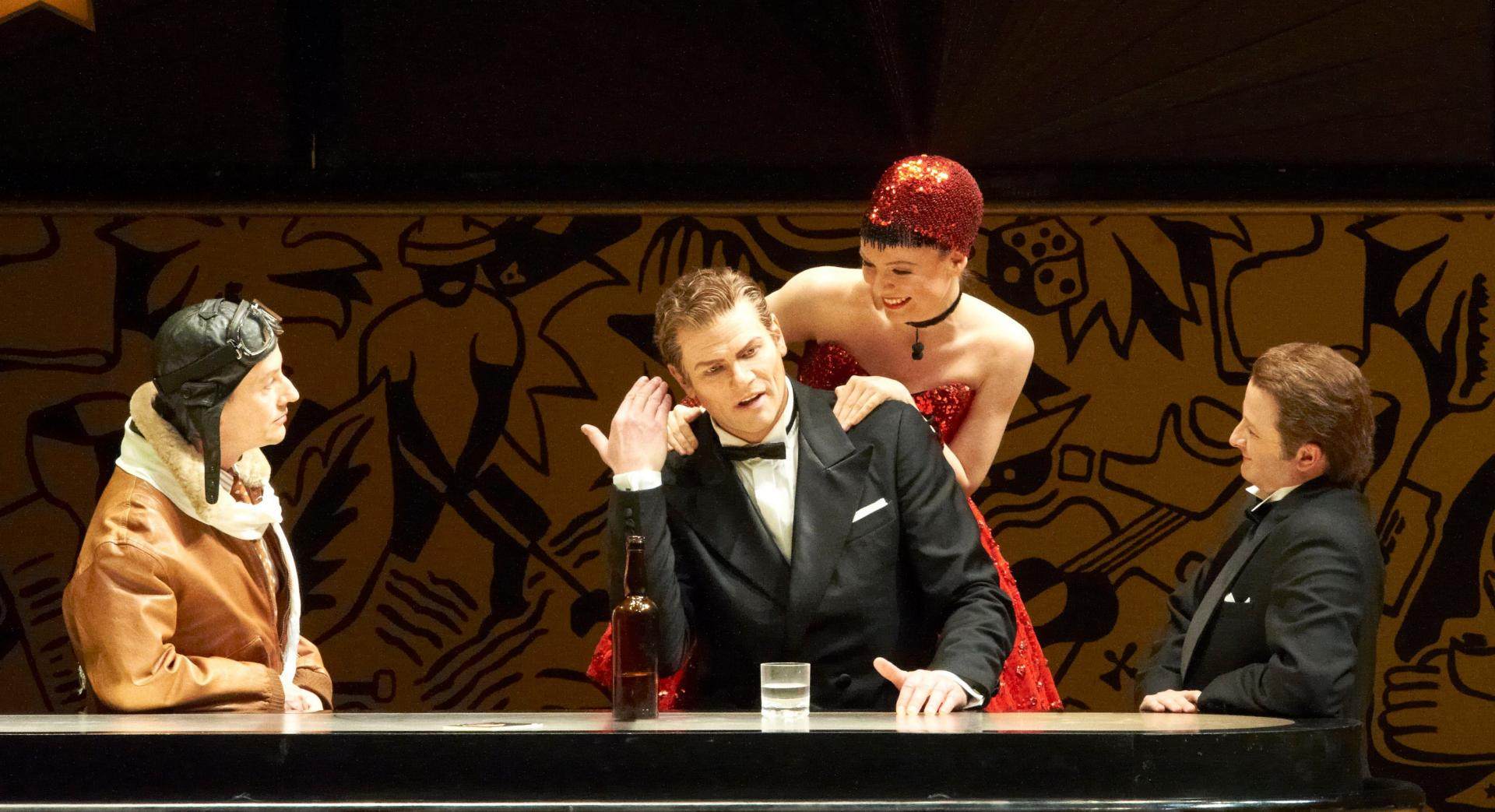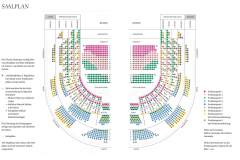Arabella
April 2025 | ||||||
|---|---|---|---|---|---|---|
Mo | Tu | We | Th | Fr | Sa | Su |
Synopsis
ACT 1
Arabella, the beautiful daughter of Count Waldner, is desired by many men:
Three counts are courting her, and the young officer Matteo is also in love with her. His hopes are nourished by Zdenka, who is devoted to him. She is Arabella's younger sister, but appears as a boy, as the Waldner family is unable to take two daughters to Vienna in a manner befitting their status. Arabella, however, wants to wait for the right man and shows Zdenka a strange man from the window whom she had previously met on the street and who had made a strong impression on her.
This stranger is Madryka. A letter from Waldner to his deceased uncle of the same name had summoned him to Vienna. Waldner, pressed by debts, had written to his rich friend and regimental comrade in Slavonia and enclosed a picture of Arabella. The young Mandryka and sole heir had fallen in love with the painting straight away and now asked Waldner for Arabella's hand in marriage. As he is the right man, she also gives him her word, but wants to bid farewell to her admirers from her girlhood with a final dance during the Fiakerball.
ACT 2 & 3
Zdenka slips the desperate Matteo an envelope containing, as she tells him, the key to Arabella's room, where she will be waiting for him that night.
Mandryka accidentally witnesses this conversation and believes that Arabella has betrayed her. In the meantime, she has returned from the ball and meets Matteo in the hotel lobby, who thinks he has just held her in his arms in her room and doesn't understand why she is now so brittle. Mandryka appears in the company of Arabella's parents and believes he has convicted her of infidelity.
But then Zdenka, recognizable as a girl, rushes over. She herself has received Matteo in the dark room and now wants to throw herself into the Danube. The shamed Mandryka, however, asks Zdenka to marry Matteo. And his happiness is also sealed: Arabella forgives him and, in accordance with the custom of her homeland, offers him a glass of pure, clear water.
ACT 1 - 60 MIN
INTERMISSION - 25 MIN
ACT 2 & 3 - 95 MIN
Program and cast
Graf Waldner: Wolfgang Bankl
Adelaide: Margaret Plummer
Arabella: Camilla Nylund
Zdenka: Sabine Devieilhe
Mandryka: Michael Volle
Matteo: Michael Laurenz
Musical director: Christian Thielemann
Director: Sven-Eric Bechtolf
Stage: Rolf Glittenberg
Costumes: Marianne Glittenberg
Vienna State Opera
Public Transport
Subway lines: U1, U2, U4
Trams: 1, 2, D, J, 62, 65
Buses: 59A
Local Railway: Badner Bahn
Stops: Karlsplatz / Opera
Taxi stands are available nearby.
Parking
Parking is only € 6, - for eight hours!
The Wiener Staatsoper and the ÖPARK Kärntner Ring Garage on Mahlerstraße 8, under the “Ringstraßengalerien”, offer the patrons of the Vienna State Opera a new, reduced parking fee. You can park in the Kärntner Ring Garage for up to 8 hours and pay only a flat fee of € 6, -. Just validate your ticket at one of the discount machines inside the Wiener Staatsoper. The normal rate will be charged for parking time greater than 8 hours. The validation machines can be found at the following coat checks: Operngasse, Herbert von Karajan-Platz, and the right and left and balcony galleries.
Important: In order to get the discount, please draw a ticket and do not use your credit card when entering the garage!
After devaluing your ticket in the Wiener Staatsoper you can pay comfortably by credit card or cash at the vending machines.
The machines accept coins and bills up to 50.- Euro. Parking time longer than 8 hours will be charged at the normal rate.
History
The structure of the opera house was planned by the Viennese architect August Sicard von Sicardsburg, while the inside was designed by interior decorator Eduard van der Nüll. It was also impacted by other major artists such as Moritz von Schwind, who painted the frescoes in the foyer, and the famous "Zauberflöten" (“Magic Flute”) series of frescoes on the veranda. Neither of the architects survived to see the opening of ‘their’ opera house: the sensitive van der Nüll committed suicide, and his friend Sicardsburg died of a stroke soon afterwards.
On May 25, 1869, the opera house solemnly opened with Mozart's Don Giovanni in the presence of Emperor Franz Joseph and Empress Elisabeth.
The popularity of the building grew under the artistic influence of the first directors: Franz von Dingelstedt, Johann Herbeck, Franz Jauner, and Wilhelm Jahn. The Vienna opera experienced its first high point under the direction of Gustav Mahler. He completely transformed the outdated performance system, increased the precision and timing of the performances, and also utilized the experience of other noteworthy artists, such as Alfred Roller, for the formation of new stage aesthetics.
The years 1938 to 1945 were a dark chapter in the history of the opera house. Under the Nazis, many members of the house were driven out, pursued, and killed, and many works were not allowed to be played.
On March 12, 1945, the opera house was devastated during a bombing, but on May 1, 1945, the “State Opera in the Volksoper” opened with a performance of Mozart's THE MARRIAGE OF FIGARO. On October 6, 1945, the hastily restored “Theaters an der Wien” reopened with Beethoven's FIDELIO. For the next ten years the Vienna State Opera operated in two venues while the true headquarters was being rebuilt at a great expense.
The Secretary of State for Public Works, Julius Raab, announced on May 24, 1945, that reconstruction of the Vienna State Opera would begin immediately. Only the main facade, the grand staircase, and the Schwind Foyer had been spared from the bombs. On November 5, 1955, the Vienna State Opera reopened with a new auditorium and modernized technology. Under the direction of Karl Böhm, Beethoven’s FIDELIO was brilliantly performed, and the opening ceremonies were broadcast by Austrian television. The whole world understood that life was beginning again for this country that had just regained its independence.
Today, the Vienna State Opera is considered one of the most important opera houses in the world; in particular, it is the house with the largest repertoire. It has been under the direction of Dominique Meyer since September 1, 2010.

 EN
EN DE
DE IT
IT FR
FR ES
ES RU
RU JP
JP RO
RO
 Seating plan
Seating plan